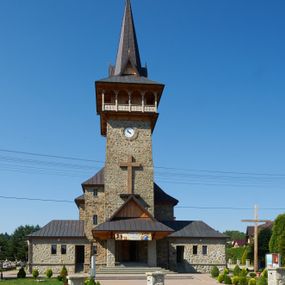
Lipnica Mała
Elaboration author
Artur Karpacz
Monuments
Parishes
History abstract
Lipnica as one village was established before 1609 on the initiative of the Thurzo family, the owners of the so-called Orava State. In 1618 Emeryk with his mother Elizabeth Czobor founded Lipnica Mała (Upper) as a separate town. The founder was John Kral with two of his own fields of land and one at the disposal of the colonists (later, five more fields were assigned to homesteads). In the middle of the 17th century, the Orava estate was owned by the Protestant Thököly family, who persecuted the local Catholics. The territory of Upper Orava suffered greatly during the anti-Habsburg Kuruc uprising led by Emeryk Thököly (1678-1683) and the march of the Lithuanian army of Hetman Kazimierz John Sapieha on his way to Vienna. It was not until the second decade of the 18th century that Lipnica Mala was repopulated and the abandoned fields were settled. At the end of the existence of the neighbouring Republic of Poland, the Austrian Empire, in subsequent Partitions (1772-1795), seized lands reaching as far as the fork of the Vistula and San rivers. The reforms of Emperor Joseph II (1780-1790) were aimed at improving the sad plight of peasants who, after the national liberation movements during the Revolutions of 1848, received freedom and the abolition of forced serfdom. With time, this has led to significant economic migration to the surrounding cities, smelters and mines in Silesia, or even to the United States of America. In 1880 Lipnica Mała was inhabited by 1903 people in 353 houses, including 1680 Catholics, 205 "undisclosed" and 18 Jews. After the end of World War I in 1918, the Council of Ambassadors decided to grant the disputed areas of Spiš and Orava to the Republic of Poland. In the interwar period there were numerous patriotic and cultural societies in the region. On September 1, 1939 the border was crossed by the German army supported by the 1st Slovak Infantry Division. The Upper Orava was incorporated into a puppet state governed by the authoritarian Father Joseph Tiso. After another war, problematic areas were returned to Poland (then the Polish People's Republic). Reconstruction of the damage was commenced, the "Świt" Consumer Cooperative (later "GS") was established, and the telephone and electricity networks were supplied. In the seventies of the 20th century, many people decided to leave the village, seeking employment in construction and the footwear industry. Currently, the commune benefits mainly from developing tourism.
How to cite?
Artur Karpacz, "Lipnica Mała", [in:] "The Sacred Lesser Poland Heritage", 2026, source: https://sdm.upjp2.edu.pl/en/places/lipnica-mala-1
